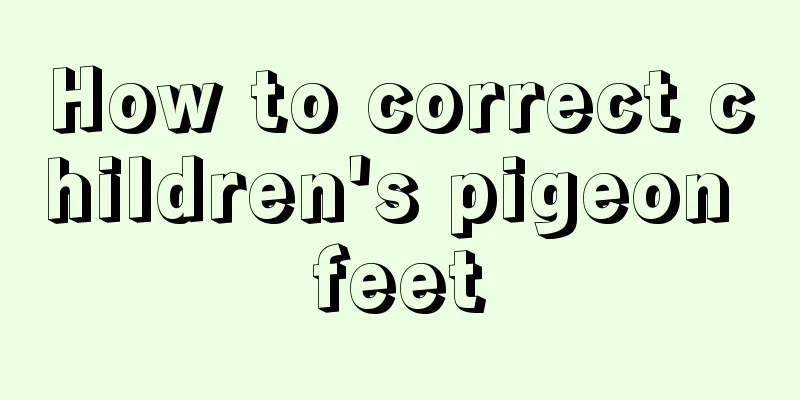Causes of apnea in premature infants

|
Respiratory apnea is a common phenomenon in premature infants. If this apnea lasts for more than 20 seconds, it is very dangerous. The child is prone to purple skin, decreased muscle tension, etc. There are many reasons for apnea in children, the most important of which is the primary reason. Because the child's respiratory center system is immature, it is easy to cause primary apnea. Causes of apnea in premature infants: 1. Primary Premature babies may suffer from primary sleep apnea because their respiratory center is not fully developed. 2. Symptomatic 1. Hypoxia: The child is suffocating, has pneumonia, anemia, etc.; 2. Infection: The child has sepsis, meningitis and other diseases; 3. Diseases of the central nervous system: children have intraventricular hemorrhage or hypoxic-ischemic encephalopathy, etc.; 4. The ambient temperature is not suitable, the temperature is too high or too low; 5. The child's metabolism is disordered: symptoms such as hypoglycemia and hypocalcemia; 6. The child has gastric or esophageal reflux, or has necrotizing enterocolitis; 7. The child's neck is bent too far forward, causing airflow obstruction. Premature babies are more likely to suffer from sleep apnea, with the chance of developing the disease reaching about 55%, and the earlier the premature birth, the greater the chance of developing the disease. Treatment of neonatal apnea 1. Treatment of the primary disease If the cause of the apnea has been determined, then related diseases, such as anemia and low blood sugar, need to be treated. 2. Treatment of sleep apnea If you are unsure of the cause of your child's illness, or if you know the cause but the treatment is unclear, you can use the following methods based on the doctor's advice: (1) Oxygen supply: If a child has sleep apnea, oxygen supply is necessary to treat hypoxemia and reduce the chance of sleep apnea. Children will usually wear masks or hoods, and tests will be conducted during oxygen supply. It is best to maintain PaO2 at 6.65 to 10.76 kPa (50-80 mmHg) and pulse oxygen saturation at around 90%, while preventing the occurrence of hyperoxia. (2) Increase afferent impulses: When a child experiences sleep apnea, supporting the child's back, tapping the soles of the child's feet, or providing the child with other tactile stimulation can also reduce the chance of sleep apnea. But someone needs to look after the children. You can also place your child on a vibrating water bed to give your child's vestibule more stimulation. This will make the sensory nerve impulses in the child's respiratory center more intense and reduce the frequency of apnea attacks. 3. Medication Theophylline or aminophylline is one of the most commonly used drugs and belongs to the class of alpha-xanthines. Theacrine can stimulate the respiratory center or make it more sensitive to carbon dioxide. The child's breathing will become faster and the frequency of apnea attacks will decrease. In fact, this method of increasing cyclic adenosine monophosphate and catecholamines in children can relieve the symptoms of sleep apnea. |
<<: How to do early intervention for premature babies
>>: Premature babies are always startled when they sleep
Recommend
How to treat burns on children faster
Children getting scalded happens frequently in ou...
What happens when a baby has a fever and convulsions?
We attach great importance to the physical health...
Treatment of neonatal jaundice during its peak period
Nowadays, the incidence rate of newborns is getti...
What causes knee pain in children?
When people talk about knee pain and back pain, t...
Can children sweat steam?
Many people know that steaming is very good for o...
Is it okay for children to eat walnuts?
It is perfect for children to eat walnuts, becaus...
What is the reason for the baby's front teeth to turn black?
Teeth are the basis for us to chew food and also ...
How is ADHD diagnosed in children?
The birth of a new life is a joyful thing, but hi...
Reasons why children have bad breath
Children's bad mouth is mainly caused by indi...
What is the reason for the baby's face to have a port-wine stain?
Facial port-wine stain is a common benign tumor i...
What kind of eye drops are better for children to use when blinking?
Sometimes babies like to blink their eyes especia...
How long does it take to cure infantile bronchitis?
Infants are more susceptible to diseases due to t...
How to relieve hoarseness in children's throat?
It is the basic nature of children to love playin...
What to do if your child's teeth fall out
Because children love to play and like to eat swe...
What to do if your one-year-old baby has repeated fevers
It is a common phenomenon for babies to have a fe...









